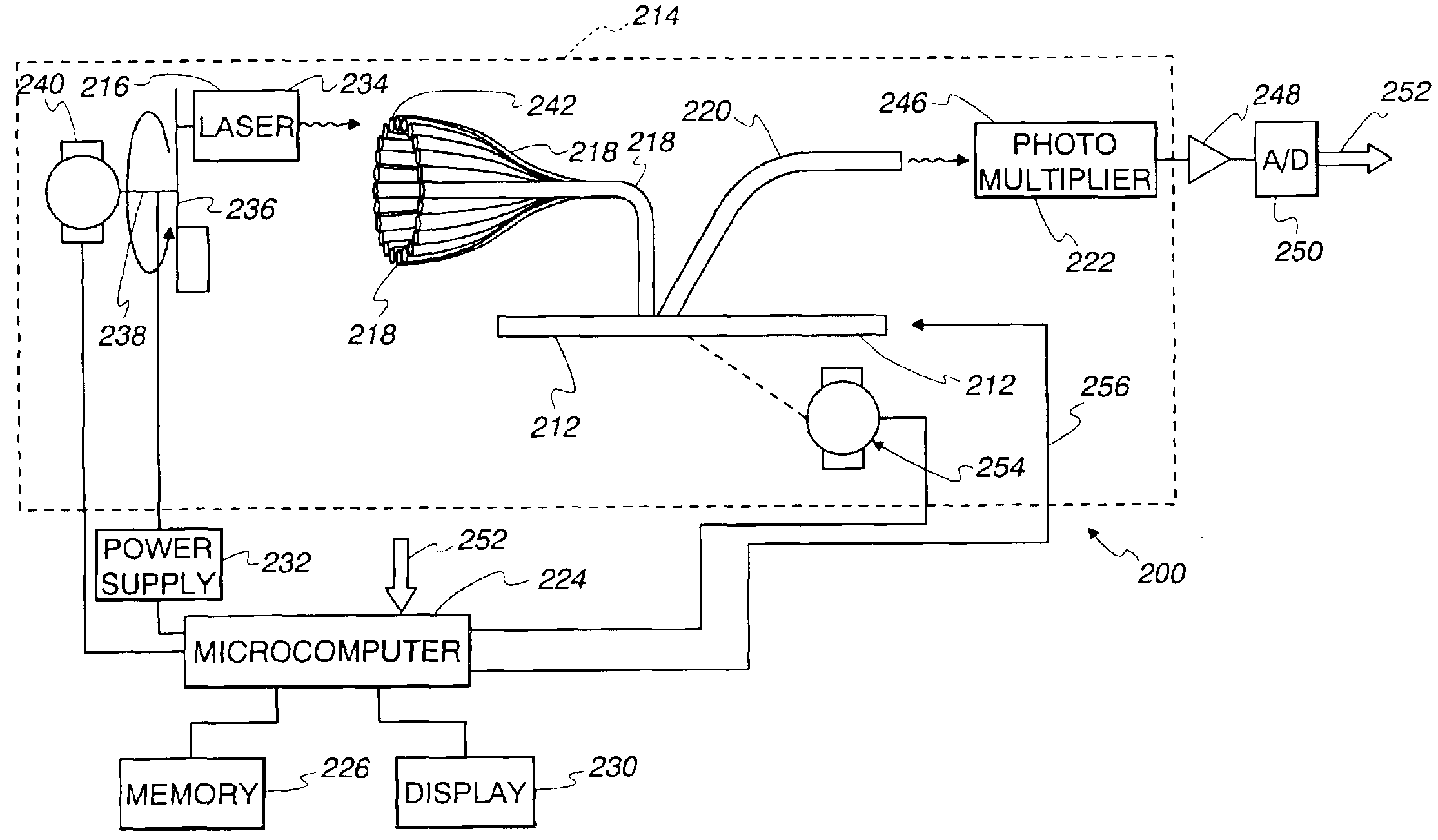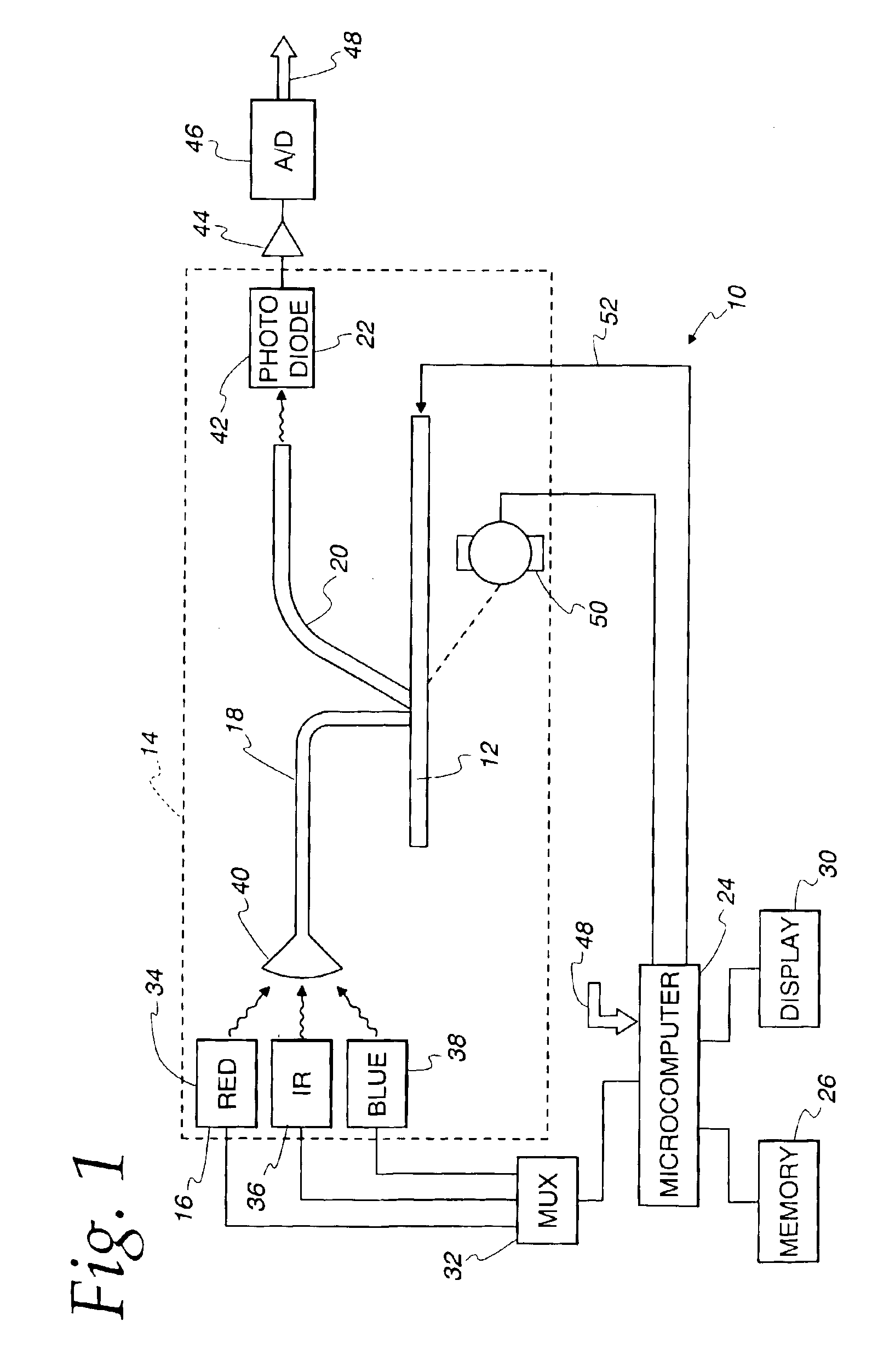Method and apparatus for radiographic imaging
a computed radiography and phosphor plate technology, applied in the field of radiographic imaging, can solve the problems of loss of resolution, interference with electronic signals, and the adjustment mechanism does not employ the very expensive and heavy x and y-slides, and achieve the effect of eliminating sensitivity and other problems and low nois
- Summary
- Abstract
- Description
- Claims
- Application Information
AI Technical Summary
Benefits of technology
Problems solved by technology
Method used
Image
Examples
Embodiment Construction
[0048]Referring now to the drawings and especially to FIG. 1, an apparatus embodying the present invention and generally identified by reference numeral 10 is shown therein. The apparatus 10 comprises a computed radiography plate scanner for use in scanning an exposed computed radiography plate 12, which may be a computed radiography plate or a computed radiography sheet. The computed radiography plate scanner 10 produces a visible image of the latent x-ray image stored on the computed radiography plate 12. The computed radiography plate or sheet 12 is normally held in a light-tight cassette but is removable from the cassette for reading or scanning.
[0049]The apparatus 10 comprises a light-tight enclosure 14 for holding the computed radiography plate 12 during scanning. An optical pump source 16 which may be LEDs in one embodiment or a laser pumping light source 216 (FIG. 8) in another embodiment produces pumping light to be delivered to the computed radiography plate 12 in order to...
PUM
 Login to View More
Login to View More Abstract
Description
Claims
Application Information
 Login to View More
Login to View More - R&D
- Intellectual Property
- Life Sciences
- Materials
- Tech Scout
- Unparalleled Data Quality
- Higher Quality Content
- 60% Fewer Hallucinations
Browse by: Latest US Patents, China's latest patents, Technical Efficacy Thesaurus, Application Domain, Technology Topic, Popular Technical Reports.
© 2025 PatSnap. All rights reserved.Legal|Privacy policy|Modern Slavery Act Transparency Statement|Sitemap|About US| Contact US: help@patsnap.com



